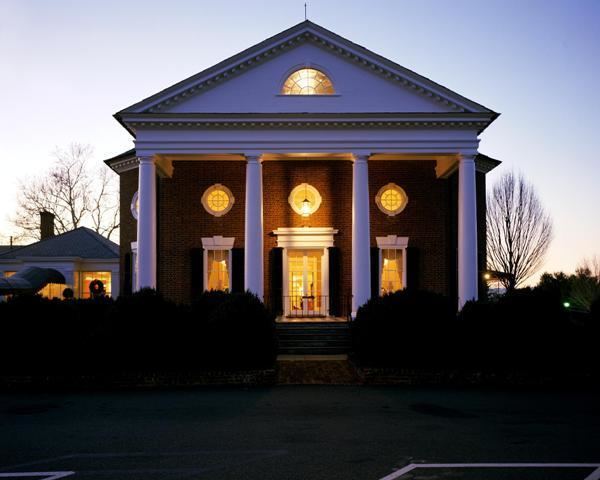Phone +1 434-296-5661 | ||
 | ||
Address 1625 Country Club Cir, Charlottesville, VA 22901, USA | ||
Farmington country club and neighborhood
The Farmington Country Club is a country club in Charlottesville, Virginia, USA. The octagonal east wing of the clubhouse, constructed in 1802 near the University of Virginia as an addition to a pre-1780 structure, was designed by Thomas Jefferson. Membership is by invitation only.
Contents
- Farmington country club and neighborhood
- Welcome to farmington country club
- History
- Description
- Controversy
- References
Welcome to farmington country club
History
Description
What is now the Clubhouse was originally a spacious plantation house with an elongated wing that contained several guest rooms for the Divers’ extended family. It was originally designed by Thomas Jefferson and completed in 1803. Separate quarters existed for servants, who provided the luxurious living of another age. The farm buildings consisted of rows of box stalls for horses (since converted to locker rooms), large barns, and numerous other buildings. The main house, or Clubhouse, is a large, impressive brick structure. Through the portico, one enters the Jefferson Room. In 1976, the Jefferson Room was restored under the direction of Dr. Frederick D. Nichols, Professor of Jeffersonian Architecture at the University of Virginia.
Similar to the all-weather passageway at Monticello, a covered passageway with flying buttresses led the plantation’s residents from the main house to the stable.
Except for the barns and a number of outlying buildings, all of the original buildings have been retained and updated. The guest wing has been converted into a “Guest Gallery”. Below and in front of this Gallery is the swimming pool. Since the Club opened in 1929, two additional guest galleries have been added, both in keeping with the original design. One is an extension of the first gallery. The second faces the First Tee of the 18-hole golf course and is adjacent to the Farmington Grill.
Controversy
The Club has always admitted new members by invitation only. Farmington gained notoriety in the late 1960s and early '70s for its whites-only membership policy. University of Virginia President Edgar F. Shannon, Jr. resigned from the club in the late 1960s and the University banned the use of University funds for entertaining in segregated facilities for a period of time. In 1976, University of Virginia President Frank Hereford's membership resulted in controversy at the University and one faculty resignation. The incident became the catalyst for social change at the University including the establishment of an Office of Minority Affairs. Since the members purchased the Club in 1979, Farmington has adopted a firm non-discrimination policy and has consistently sought diversity in its ranks. Although Farmington Country Club remains private, and its memberships are by invitation only, it does not discriminate on the basis of age, national origin, race, religion or gender.
